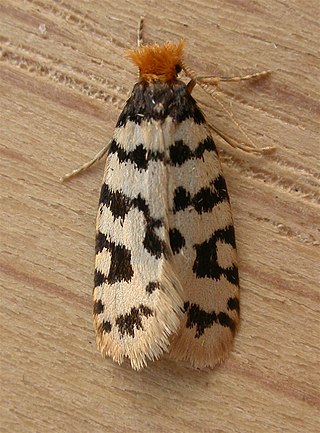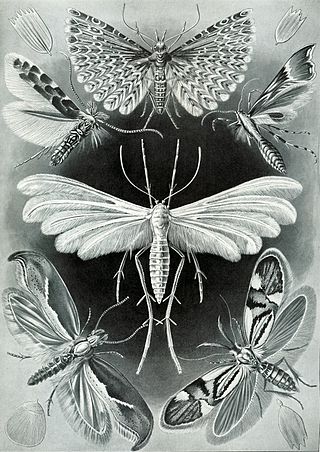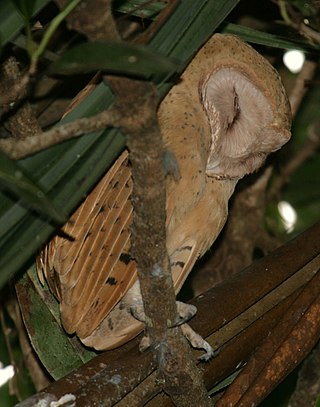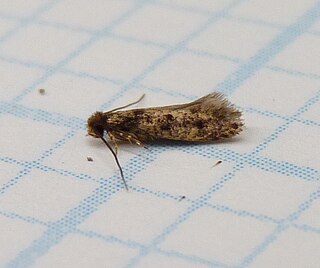
The evergreen bagworm, commonly known as bagworm, eastern bagworm, common bagworm, common basket worm, or North American bagworm, is a moth that spins its cocoon in its larval life, decorating it with bits of plant material from the trees on which it feeds.

The Psychidae are a family of the Lepidoptera. The bagworm family is fairly small, with about 1,350 species described. Bagworm species are found globally, with some, such as the snailcase bagworm, in modern times settling continents where they are not native.

Phelsuma kely is a species of diurnal gecko. It is endemic to Madagascar and is known from the central east coast of Madagascar, south of Tamatave. It typically inhabits dragon trees. The gecko feeds on insects and probably nectar.

Microlepidoptera (micromoths) is an artificial grouping of moth families, commonly known as the "smaller moths". These generally have wingspans of under 20 mm, so are harder to identify by external phenotypic markings than macrolepidoptera. They present some lifestyles that the larger Lepidoptera do not have, but this is not an identifying mark. Some hobbyists further divide this group into separate groups, such as leaf miners or rollers, stem or root borers, and then usually follow the more rigorous scientific taxonomy of lepidopterans. Efforts to stabilize the term have usually proven inadequate.

The red owl is an owl in the barn owl family Tytonidae. It is also known as the Madagascar red owl, Madagascar grass-owl, Soumagne's owl or lesser grass-owl. It is a rare resident of Madagascar that was virtually unknown from its discovery in 1876 to its rediscovery by researchers from the World Wide Fund for Nature in 1993. It is currently listed as vulnerable because of habitat loss, but recent studies have determined it may have a wider range than first believed, though further research in distribution and ecology is required. It has possibly been overlooked because of its close resemblance to the closely related barn owl.
Eumeta crameri is a bagworm moth of the family Psychidae. It was described by John O. Westwood in 1854 and has worldwide distribution in tropical and subtropical habitats, including India, Bangladesh, Sri Lanka, New Zealand and Puerto Rico.

Phereoeca uterella, known by the vernacular names plaster bagworm and household casebearer, is a moth species in family Tineidae. It occurs in tropical climates, where it is common in houses, and is presumed native to the Neotropical realm. In the Americas, it has been recorded from Brazil, Guyana, and the southern United States as well as the Virgin Islands and Trinidad, and tentatively identified from Tobago.

Maliarpha separatella, the African white stemborer, is a species of moth of the family Pyralidae. A worldwide paddy pest, it is found throughout African countries of Cameroon, Mali, Réunion, Madagascar, South Africa, and many Asian paddy cultivating countries such as Myanmar, India, and Sri Lanka. Though they are reported from China and Papua New Guinea, they are also known to attack sugarcane.
Hapana milloti is a species of moth of the family Thyrididae. It is found in Madagascar.
Deborrea humberti is a species of bagworm moth native to Madagascar.
Deborrea griveaudi is a species of bagworm moth native to Madagascar.
Deborrea robinsoni is a species of bagworm moth native to Madagascar.
Deborrea cambouei is a species of bagworm moth native to Madagascar.
Deborrea seyrigi is a species of bagworm moth native to Madagascar.
Sapheneutis pulchella is a species of bagworm moth native to eastern Madagascar.
Typhonia bimaculata is a species of bagworm moth native to Madagascar.

Galtara extensa is a moth of the subfamily Arctiinae first described by Arthur Gardiner Butler in 1880. It is found on the Comoros and in Madagascar.
Conoeca psammogona is a species of bagworm that is known from Imerina in central Madagascar.

Pteroma plagiophleps is a moth of the family Psychidae first described by George Hampson in 1892. It is found in India, Bangladesh, Sri Lanka, and Indonesia.
Mahasena corbetti, the coconut case caterpillar, is a polyphagous species of bagworm. This species is classified as leaf-eating pest caterpillars that produce tough silk out of their bags from dried foliage. Currently, M. corbetti is considered a 'pest of quarantine importance' in multiple countries and is included on the list of dangerous pests in the Malaysian plant quarantine act.








